Stitching History From The Holocaust
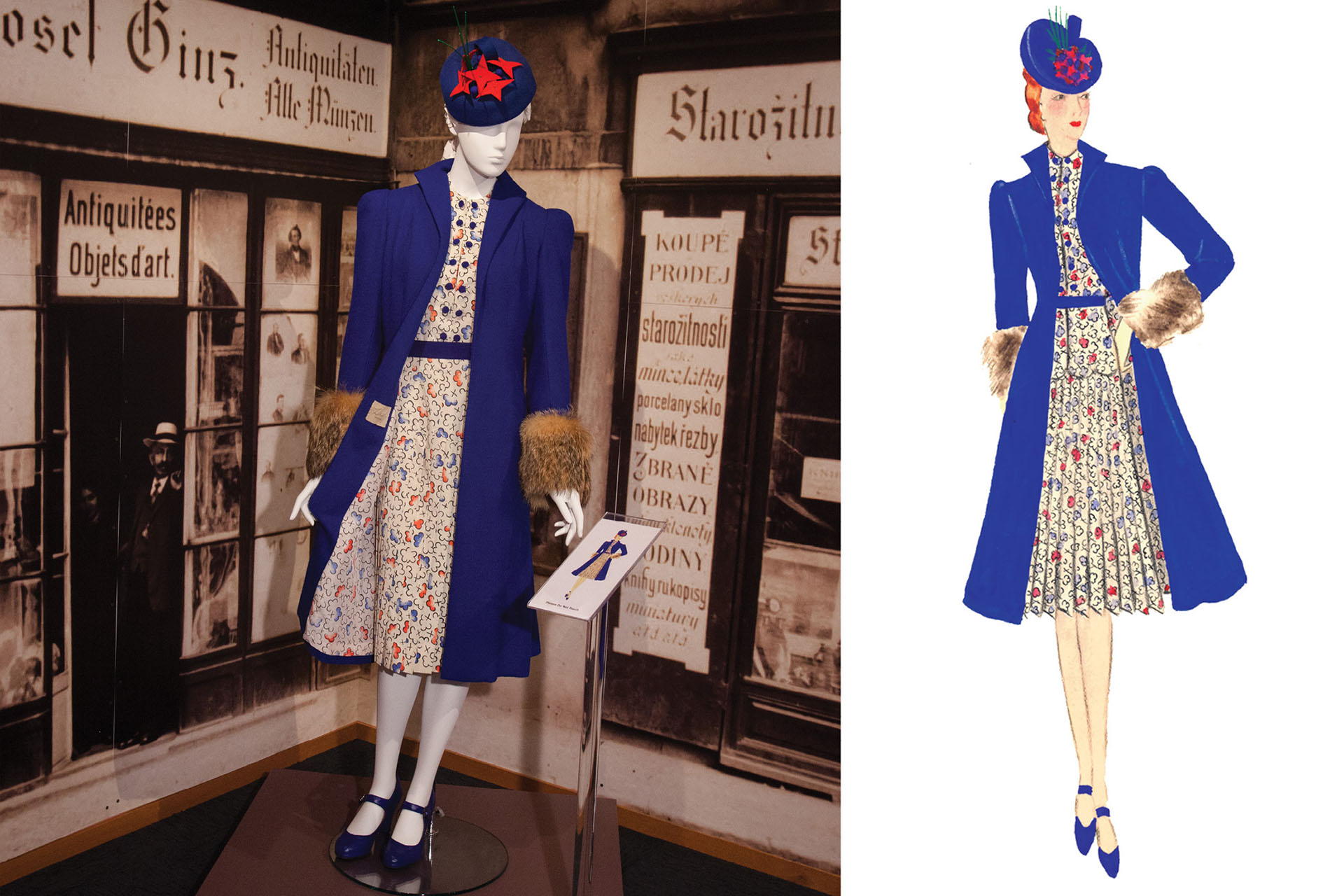
Blue and orange on cream floral dress and blue coat with faux fur cuffs
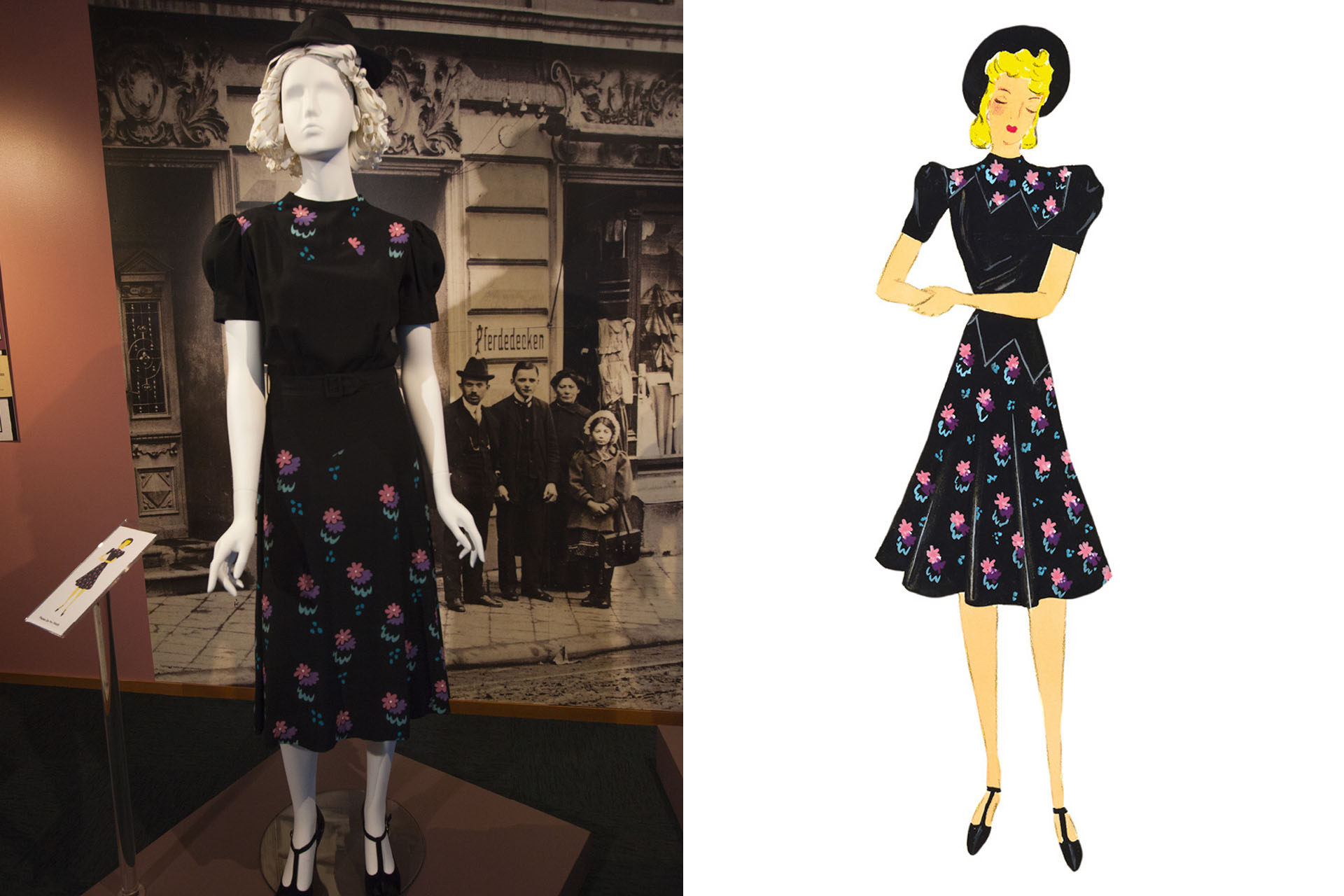
Black dress pink, purple and blue floral accents
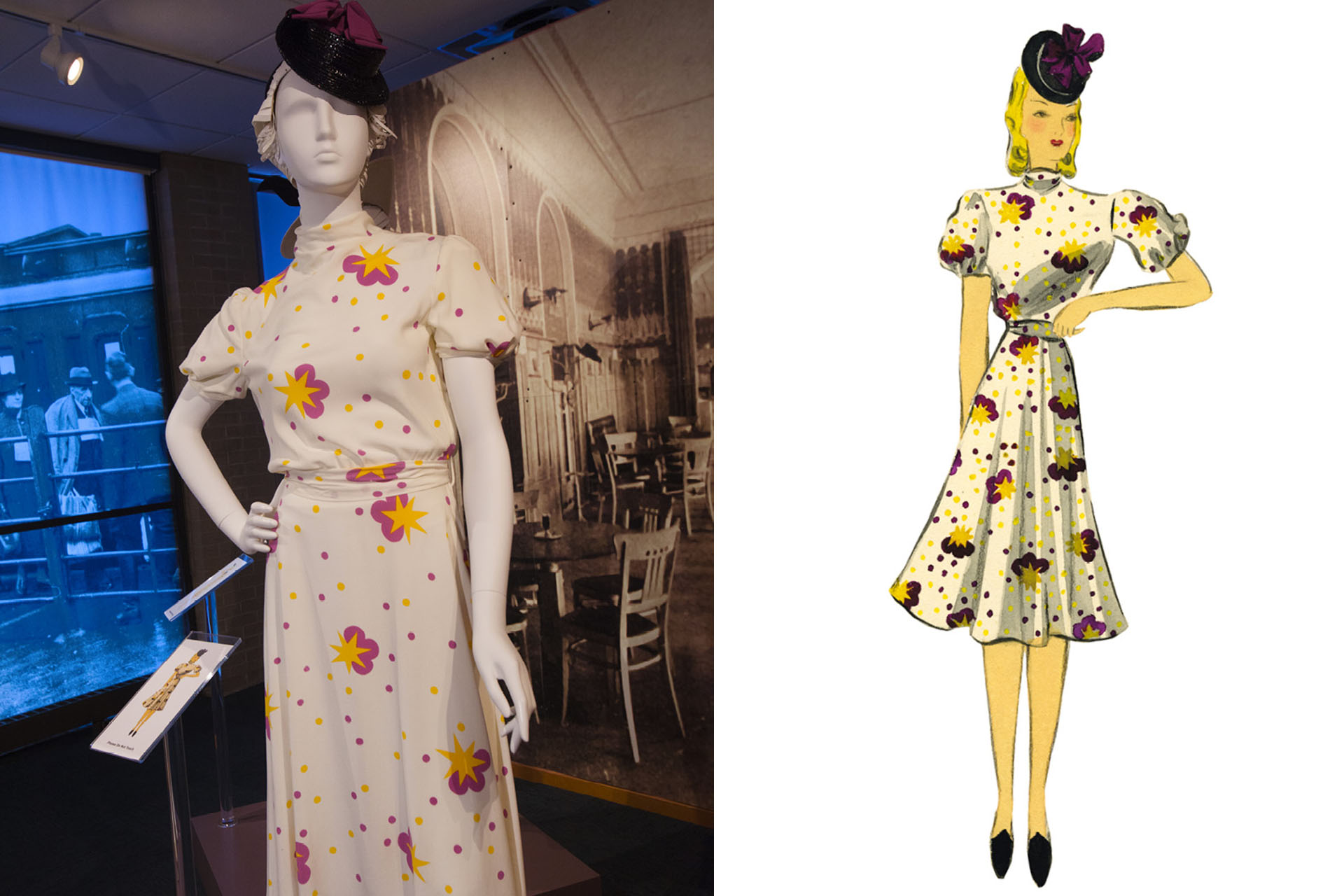
Cream waisted dress with yellow stars and purple clouds. Editors note: interesting choice of yellow stars
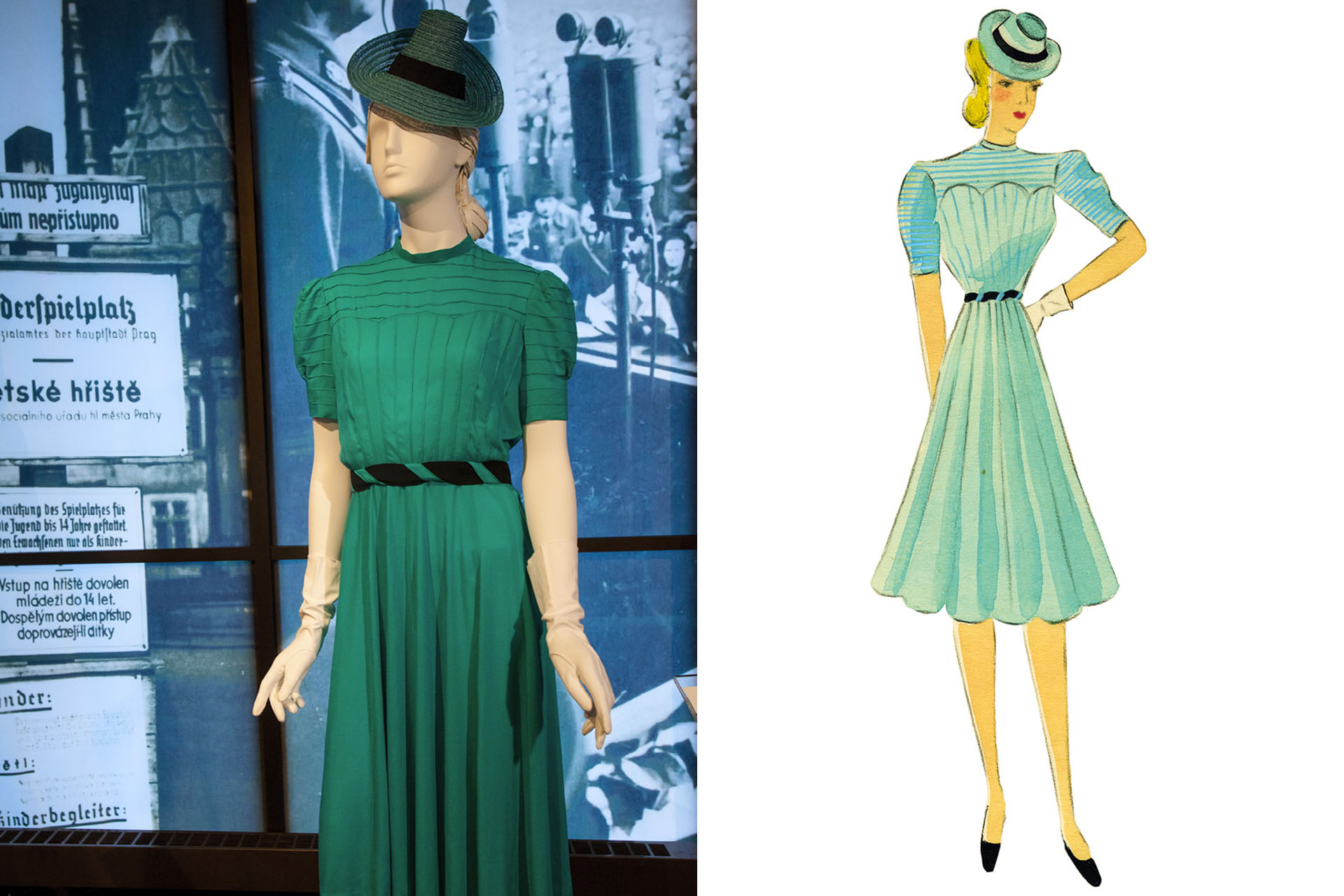
Aquamarine dress with black and aqua waist sash
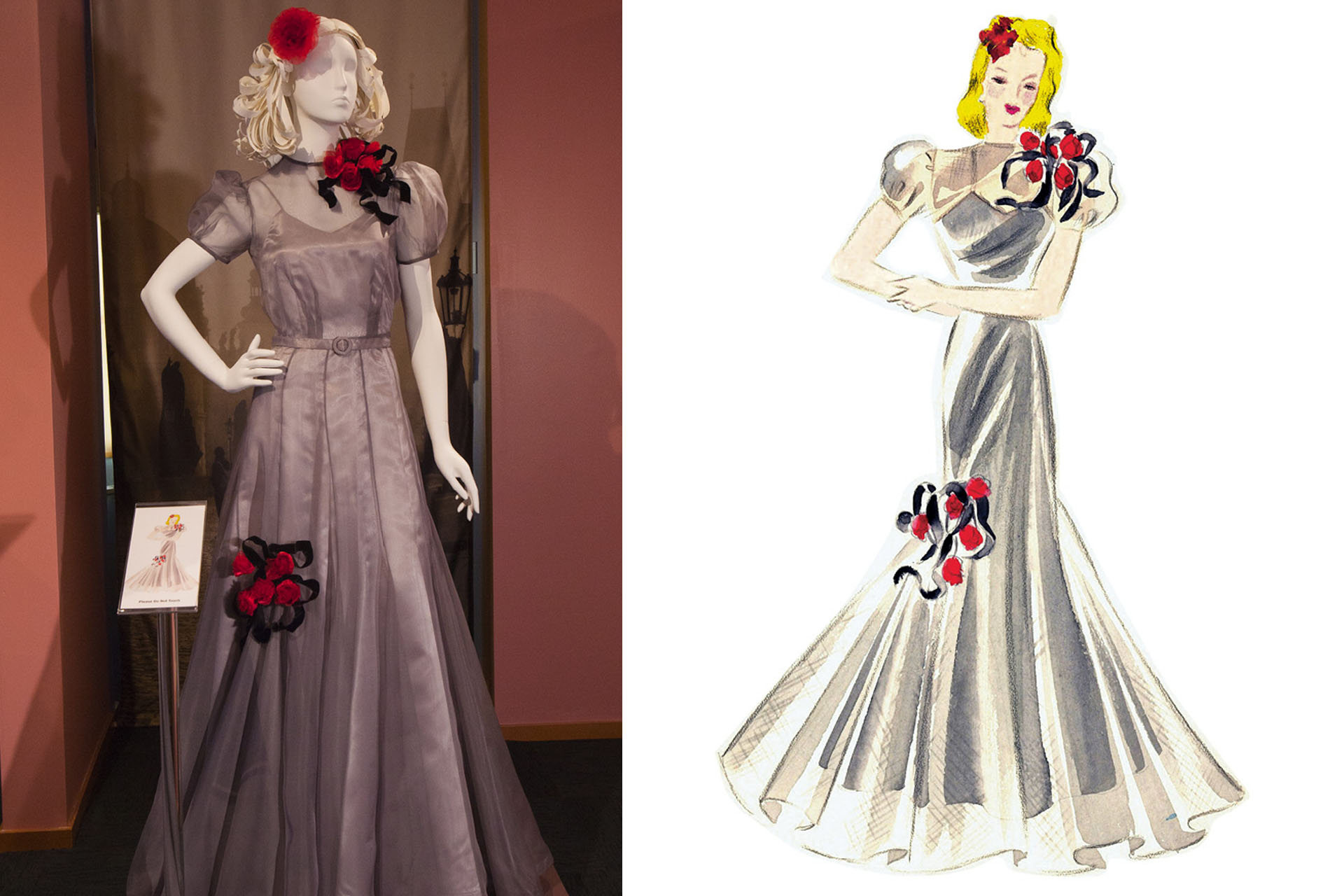
Grey evening gown with bunches of red roses at the neck and knee
The soul of America belongs to the immigrant, and its heart to the sought after promise of inalienable rights and freedoms safe-guarded by a government at the service of its citizens. From all corners of the globe, millions of people risk, gamble and sacrifice as they leave the familiar behind, flocking to our shores to escape war, natural disaster, persecution, and genocide, in search of asylum, greater freedoms, opportunities, and to be with loved ones.
Not all of them make it.

Paul and Hedy Strnad
This story begins in 1997, when Burton Strnad, a lawyer from Milwaukee, came across a box of old letters while cleaning out his parent’s basement. He opened an envelope with a Nazi stamp of censorship and a letter inside dated December 11, 1939.
The letter was from Czechoslovakia, addressed to Burton’s father, Alvin, from his cousin Paul Strnad. In cryptic language, likely to circumvent S.S. scrutiny, Paul was desperate to obtain sponsorships for himself and his wife to immigrate to America to escape the onslaught of Nazi Germany.
In 1939, Paul Strnad and his wife Hedy, a successful fashion designer, were desperate to leave Nazi occupied Czechoslovakia. The efforts of family in Milwaukee, Wisconsin, to fight on their behalf notwithstanding, their appeals to obtain visas to come to America were denied due to tight U.S. restrictions on immigrants and refugees – and arguably the interplay of politics.
Paul and Hedy were interned at the Theresienstadt concentration camp before being deported to the Warsaw ghetto (and possibly Treblinka) where they were murdered. The record is unclear.
The story would also remain unknown until, almost sixty years later, when their story came to light through Burton Strnad’s serendipitous discovery of the letters and dress designs hidden in that box in the basement.
An exhibit at the Jewish Museum Milwaukee (JMM), entitled Stitching History from the Holocaust, displays the letters from the couple and sketches that Hedy designed but would never realize.
In conjunction with the exhibit, the Jewish Museum of Florida-FIU commissioned a play, A Stitch in Time, written by Miami playwright Susan Westfall and directed by Florida International University associate professor of theatre Michael Yawney.
The one-act play brings to life the letters in the box and the spirit, plight, and tragic fate of Paul and Hedy.
Other letters in the box describe the dire state of Prague under Nazi rule and what Paul believed was the impending fate of Czechoslovakian Jews. He wrote about Prague’s growing “anti-Semitic tendencies under German influence” and that a “catastrophe has overtaken our country. A catastrophe which has upset our whole life.”
Included with the letters were fashion sketches by Hedy. Paul hoped that these examples of her work would provide evidence of their ability to find employment and be self-sustaining in America – a fate which would never come to pass.
Burton donated the letters and sketches to the Jewish Museum Milwaukee where they became a part of their permanent collection.
The story could have stopped there – but in 2014, at the suggestion of a patron, the museum teamed up with the costume shop of the Milwaukee Repertory Theater to transform Hedy’s eight colorful designs into three-dimensional reality - an evening gown, two coats, two suits, and several daytime dresses.
In the interest of authenticity, scholars from six disciplines of the humanities, including fashion, immigration, and Holocaust history, were consulted on the making of the outfits.
It took nearly 3,000 man hours over 10 months to preserve the integrity of the colors in the drawings, choose the likely fabrics used at the time (such as rayon and bouclé), translate the sketches into patterns, and coordinate the outfits with matching hats and shoes.
“Her drawings represented the height of fashion in 1939, providing a small window into the lives of Jews in Prague on the eve of World War II,” says JMM curator Molly Dubin.
“They looked like clothes meant for fun,” adds Jessica Jaeger from the Repertory Theater’s costume department. “Like what a young woman might have worn for a day of shopping or a movie matinee.”
Yet all that talent, creativity and energy stood in contrast to what had befallen the Strnads.
“You want her vision to be realized but you can’t talk to her about it. And the reason is tragic,” added Jaeger.
Though Hedy’s world was crumbling, she continued to create glamour, style and sophistication in an increasingly destructive world.
“When you see Hedy’s dresses, you can really tell the kind of person she was,” said play director Yawney, who found inspiration from the finished garments. “The dresses are whimsical, witty and just really gorgeous.” Possibly much like the designer herself, whose real name was Hedwig. She was a redhead and owned a small, successful design and tailor shop in Prague.
This additional information, acquired through Yad VaShem and Hedy’s niece in Germany, who survived the Holocaust, enabled JMM researchers to paint a faithful picture of the life and work of Hedy Strnad.
A New York Times review of the exhibition states, “The fashions are both text and textile, a story of life and death told in fabric … a recollection of mortality and persecution…” serving as a testament to what happens when human suffering is ignored and to the inestimable talents and contributions that perished in the Holocaust.Bottom of Form
“The universal themes in this exhibition still resonate in today’s modern world and inspired us to commission this original play,” said Jo Ann Arnowitz, Executive Director and Chief Curator of the Jewish Museum of Florida-FIU.
“The messages of hope and perseverance in this story are just as striking now as they were almost eighty years ago,” continued Arnowitz.
The Strnads stand in for all the people of the time whose lives were cut short,” Yawney said. “I want [the audience] to really know the Strnads… how loving, how funny, how sweet, how energetic and just how beautiful they were.”
Two sets of costumes were created for the exhibit, meant to collaborate with and compliment the theatrical production. The exhibition is available for communities to rent and the brochure can be accessed online at stitchinghistory.com.
The play’s run at the Jewish Museum of Florida-FIU ended recently but plans are underway to tour it, hopefully in conjunction with the exhibition.
JMM’s Dubin said that when they embarked upon this journey, they were “guided by the idea that the story was rooted in one family’s experience but representative of millions of others.”
“The barriers the Strnad’s faced some eighty years ago, have taken on renewed importance regarding the hundreds of thousands of people worldwide currently seeking safe refuge,” said Dubin.
“FIU has done a great job with the production, having created a vehicle for meaningful engagement and dialogue concerning the current climate surrounding immigration injustice and intolerance,” Dubin added.
Dubin’s hope is that young people will encounter these designs, take ownership of the story, and become stewards of carrying it forward, continuing to underscore its relevance, and to seek out the stories of so many others whose lives and talents were (and continue to be) unfairly and tragically extinguished.
Paul and Hedy were not granted safe haven from the grip of genocide. However, through Hedy, serendipity (or perhaps destiny), letters discovered decades later in an obscure box and those who invested in their meaning, they were spared the fate of oblivion.
